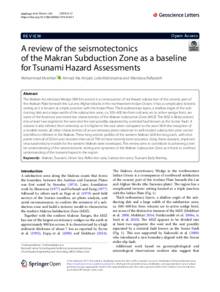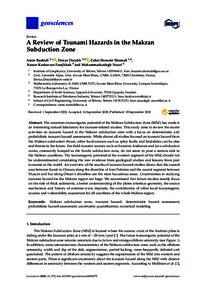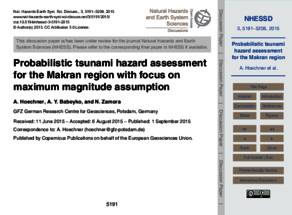وثيقة
A review of the seismotectonics of the Makran subduction zone as a baseline for Tsunami hazard assessments.
المعرف
DOI: 10.1186/s40562-019-0143-1
المصدر
Geoscience Letters. v. 6, 1, 13 [1-9].
المساهمون
الدولة
Germany.
الناشر
SpringerOpen.
ميلادي
2019-12-01
اللغة
الأنجليزية
الملخص الإنجليزي
The Makran Accretionary Wedge (900 km across) is a consequence of northward subduction of the oceanic part of the Arabian Plate beneath the Lut and Afghan blocks in the northwestern Indian Ocean. It has a complicated tectonic setting as it is located at a triple junction with the Indian Plate. Thick sedimentary layers, a shallow angle of the subducting slab and a large width of the subduction zone, ca. 500–600 km from volcanic arc to active wedge front, are some of the foremost and distinctive characteristics of the Makran Subduction Zone (MSZ). The MSZ is likely divided into at least two segments: the west and the east possibly separated by a sinistral fault known as the Sonne Fault. A division is also inferred from seismicity as it is higher in the east when compared to the west. With the exception of a notable trench, all other characteristics of an accretionary prism observed in well-studied subduction zone can be identified or inferred in the Makran. Three long seismic profiles of the western Makran (200 km long each, with shot points interval of 20 km and receivers interval of 700 m) have recently been acquired. Using these datasets, improved structural/velocity models for the western Makran were developed. This review aims to contribute to achieving a better understanding of the seismotectonic setting and dynamics of the Makran Subduction Zone as it feeds to a refined understanding of the tsunami hazard in the region.
ISSN
2196-4092
قالب العنصر
مقالات الدوريات



